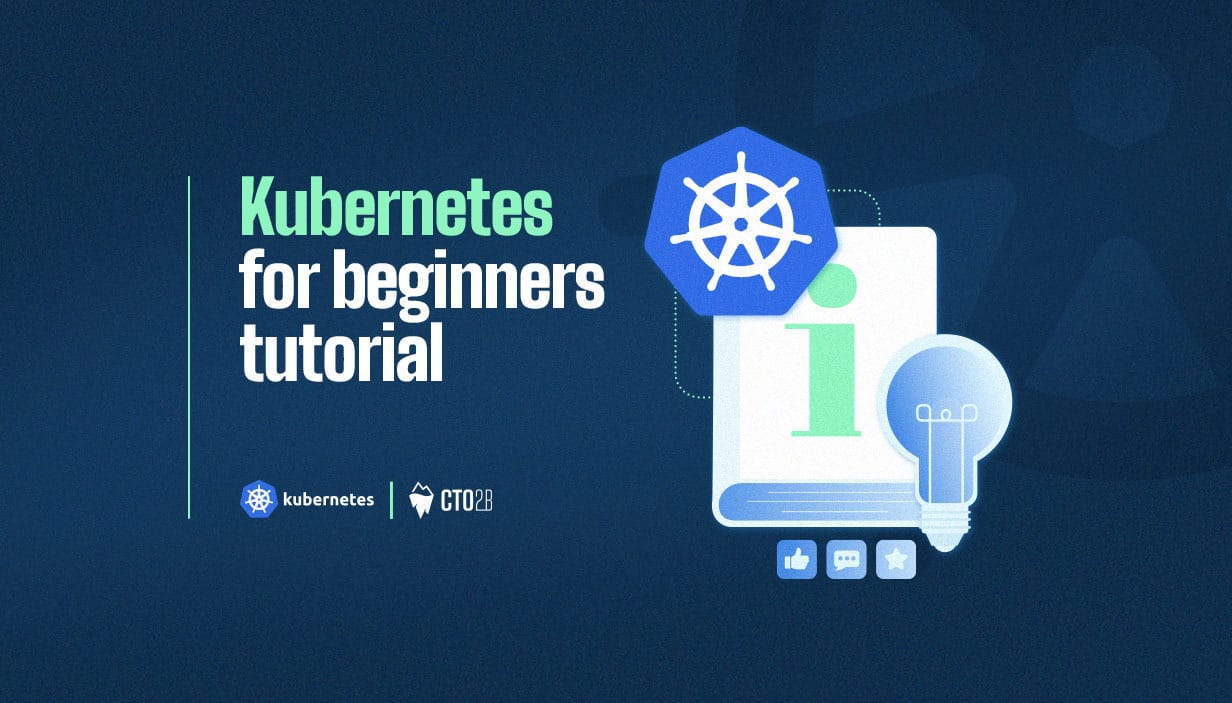Kubernetes is the de facto standard for orchestrating containerized applications at scale. Whether you’re a developer, IT professional, or just curious about cloud-native technologies, this step-by-step Kubernetes for beginners tutorial will guide you through the basics of Kubernetes, from understanding its core concepts to deploying your first application.
What is Kubernetes?
Kubernetes is an open-source platform that automates deploying, scaling, and managing containerized applications. It provides a unified way to run containers across clusters of computers, ensuring high availability, load balancing, and scalability.

Source: https://kubernetes.io/docs/concepts/overview/
Kubernetes leverages key Kubernetes components like the api server, controller manager, and Kubernetes control plane to schedule and manage containers efficiently. If you want a deeper dive into the technology, visit What is Kubernetes for an in-depth explanation.
Why Do You Need Kubernetes?
Managing containers manually can quickly become complex as your applications grow. Kubernetes solves this by offering automated deployment, scaling, self-healing, and resource utilization optimization. These Kubernetes features make it a natural fit for organizations seeking efficient cloud infrastructure management and streamlined DevOps automation.
Prerequisites for Learning Kubernetes
Before you start with Kubernetes installation, it’s helpful to have:
- Basic knowledge of containers (such as Docker)
- Familiarity with YAML configuration files
- An understanding of distributed systems
If you’re new to containers, learn more about Kubernetes vs Docker to clarify how these technologies complement each other. These are the foundational skills for managing Kubernetes.
Key Concepts and Architecture
Kubernetes Cluster Overview
A Kubernetes cluster consists of a control plane and worker nodes. The control plane manages the cluster, while nodes run your containerized workloads.
Control Plane and Nodes
- Control Plane: Handles scheduling, scaling, and management tasks via the API server and other Kubernetes components.
- Nodes: Machines (physical or virtual) on your local machine or cloud where your containers and container images run.
Pods, Deployments, and Services
- Pods: The smallest deployable units, typically running one or multiple containers.
- Kubernetes Deployments: Manage the desired state and scaling of pods.
- Kubernetes Services: Expose your pods to internal or external networks using load balancing.
Other Important Objects
- ReplicaSets: Ensure a specified number of pod replicas are running.
- Namespaces: Organize resources within the Kubernetes environment.
- Volumes: Provide persistent storage.
- ConfigMaps and Secrets: Store configuration like environment variables, API endpoints, and sensitive data such as API keys securely.
If your organization is considering moving workloads to the cloud, explore cloud migration for guidance on a smooth transition.
Setting Up Your First Kubernetes Cluster
Local Installation Options
You can start experimenting with Kubernetes locally using Minikube, K3s, or Docker Desktop. These tools simplify Kubernetes installation and are ideal for learning Kubernetes and development.
Basic Setup Steps
- Install your chosen Kubernetes distribution
- Start your cluster using the tool’s command-line interface
- Verify your cluster is running: kubectl get nodes
- Ensure your node status is “Ready”
Deploying Your First Application
Creating and Managing Pods
Define your application in a YAML manifest and create a pod:
kubectl apply -f yourpod.yamlThis starts your Kubernetes journey by deploying a pod with container images.
Scaling Applications
Use Kubernetes deployments to manage and scale your application:
kubectl create deployment nginx --image nginx:latest --replicas 3Exposing Applications with Services
Expose your app externally with a Kubernetes service:
kubectl expose deployment nginx --port 80 --type NodePortThis allows incoming traffic to reach your application from outside the cluster.
For organizations with regulatory requirements, cloud compliance is essential to ensure your Kubernetes workloads meet industry standards.
Common Kubernetes Commands for Beginners
Here are some essential kubectl commands:
- View nodes: kubectl get nodes
- List pods: kubectl get pods
- Describe a resource: kubectl describe pod yourpod
- Scale a deployment: kubectl scale deployment nginx –replicas 5
- Delete a resource: kubectl delete pod yourpod
To optimize your infrastructure and reduce expenses, check out cloud cost optimization for best practices.
Next Steps and Learning Resources
Congratulations on taking your first steps with Kubernetes! To continue your Kubernetes journey, explore the official documentation, participate in community forums, and read more in-depth guides. As you gain experience, you’ll discover how Kubernetes enables robust, scalable, and efficient container orchestration for modern cloud-native applications.
Frequently Asked Questions
What is Kubernetes and why is it used?
Kubernetes orchestrates containers, automates deployment, scaling, and management, making application delivery more reliable and efficient.
Is Kubernetes easy to learn for beginners?
Kubernetes has a learning curve, but with hands-on practice and foundational knowledge, beginners can quickly start deploying applications.
What are the prerequisites for learning Kubernetes?
Basic understanding of containers, YAML, and distributed systems is helpful.
How do I set up Kubernetes on my local machine?
Tools like Minikube or Docker Desktop make it easy to run Kubernetes locally for learning and testing.
What is a Kubernetes Pod?
A pod is the smallest deployable unit in Kubernetes, encapsulating one or more containers.
What is the difference between a Deployment and a ReplicaSet?
A Deployment manages ReplicaSets and provides declarative updates, while ReplicaSets ensure the specified number of pod replicas.
How do I expose my application to the internet using Kubernetes?
Use a Kubernetes service of type NodePort or LoadBalancer to expose your application externally.
Can I use Kubernetes without Docker?
Yes, Kubernetes supports other container runtimes in addition to Docker.
What are some common kubectl commands every beginner should know?
Commands like kubectl get pods, kubectl describe, and kubectl apply are essential for managing resources.
Where can I find more advanced Kubernetes tutorials?
Explore official documentation, community blogs, and articles for more advanced topics.
Kubernetes is a powerful foundation for modern kubernetes architecture. As you continue your Kubernetes journey, consider how cloud infrastructure management and devops automation can help you maximize the value of your Kubernetes investment.


